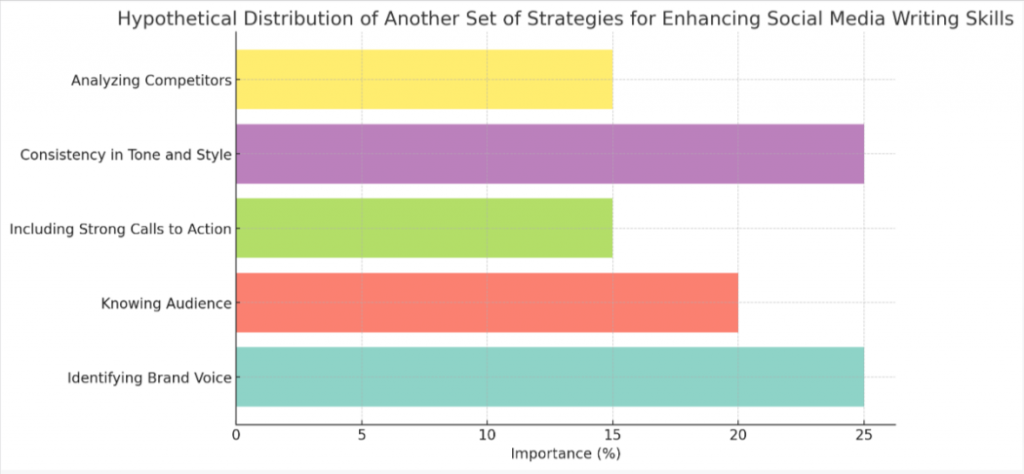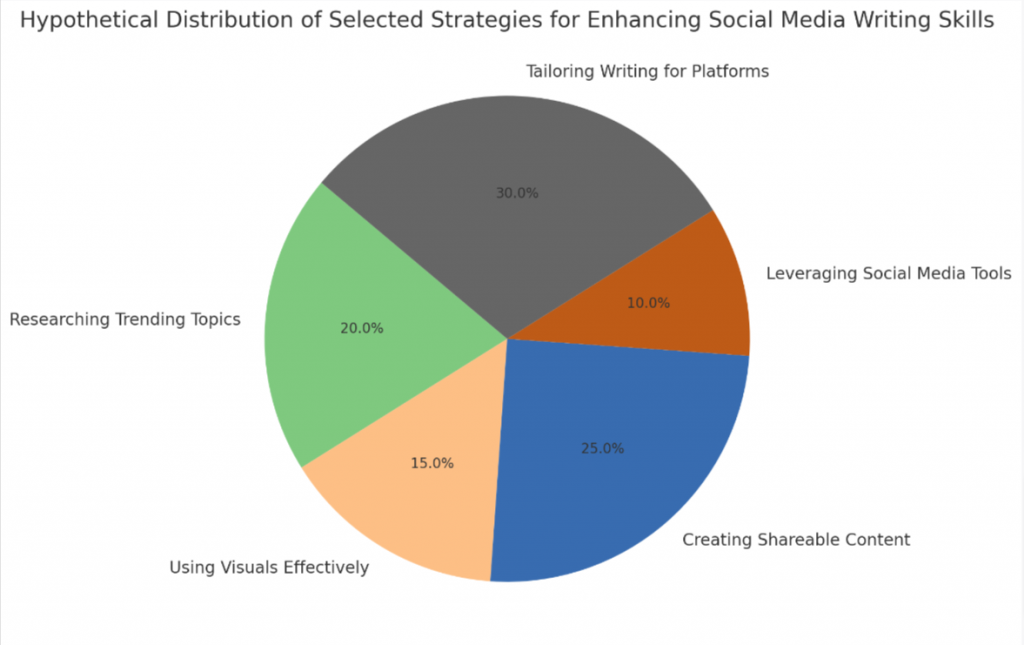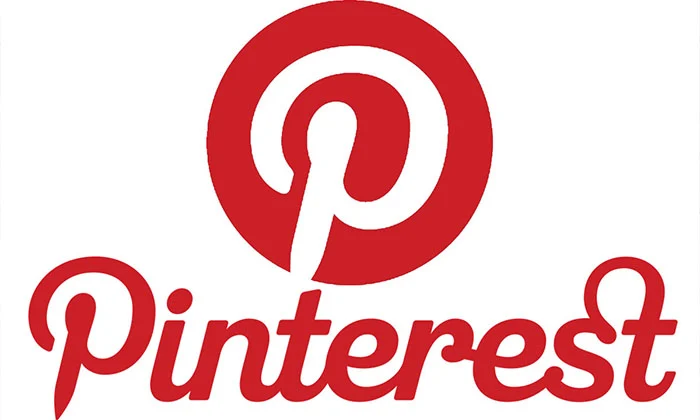Crafting Compelling Content: Strategies to Enhance Your Social Media Writing Skills
Boosting your social media writing skills can feel like a daunting task. Did you know that Instagram alone boasts 1 billion active users each month, making it an essential platform for reaching potential customers or fans? This blog post will empower you with tips and tricks to sharpen your wordsmith abilities across multiple platforms, turning casual browsers into engaged followers.
Let’s dive in!
Key Takeaways
- Identify your brand voice and understand your audience to enhance social media writing skills.
- Research trending topics, keep content concise but impactful, use visuals effectively, and include strong calls to action.
- Maintain consistency in tone and style, craft messages that invoke curiosity, analyze competitors’ strategies, and create shareable content.
- Tailor writing for different platforms and leverage social media tools for better results.
Understanding Your Brand and Audience
Identify your brand voice and know your audience to effectively enhance your social media writing skills.
Identifying your brand voice
Establishing a unique brand voice is crucial for making your business stand out on social media. This requires understanding the core values of your brand and conveying them in every interaction, post or comment you make.
For instance, if your company values transparency and simplicity, your tone might be direct and conversational. On the other hand, a luxury clothing brand might adopt an elegant, sophisticated tone.
Consistency plays a key role here; it helps foster trust and familiarity among your followers. As per various studies, businesses with strong, consistent identities are likely to earn more than those without one! Thus defining a clear brand voice offers an advantage in today’s packed digital marketplace where LinkedIn alone boasts over 706 million members.
Knowing your audience
To drive successful social media writing, one key aspect is understanding the behavior and interests of your target audience. Utilizing data from Google Analytics or platform-specific tools like Twitter Analytics and Facebook Insights can offer valuable insights about who’s engaging with your content.
You’re not just assessing demographics such as age, gender or location; it’s also about identifying their needs, concerns, preferences and values. This deeper insight helps you craft messages that resonate more effectively with those following your online presence.
For instance, if you find out most of your Instagram audience loves eco-friendly products – a post showcasing how your brand manufactures its goods sustainably could generate significant interaction.
Tailoring posts to match the audience persona allows achieving better reach and engagement rates that ultimately translate into conversions for your business.
Essential Tips for Social Media Writing
Research your topics, keeping content short but impactful, use images and videos to enhance your messages, create engaging content with a dash of wit, and include a strong call to action.
Researching your topics
Crafting great social media content begins with thorough research. Here’s how you can successfully research your topics:
- Start by identifying the trending topics in your industry.
- Use tools like Google Trends or BuzzSumo to spot the hot trends.
- Pay attention to what your competitors are posting about on their social media platforms.
- Understand what kind of posts are getting the maximum engagement.
- Read relevant blogs and articles to gather more information about the topic.
- Don’t forget to browse popular hashtags related to your industry on Instagram and Twitter.
- Ensure you’re updated with facts and statistics, for instance, understanding that Instagram has 500 million daily active users could influence your decision on where to focus your content efforts.
- Keep track of current events or popular culture references that might resonate with your audience.
- Investigate forums and Q&A sites like Quora for any ongoing conversations around your topic where you could provide valuable input.
- Delve into social media analytics to comprehend what type of content performs best on each platform.
Keeping content short but impactful
Effective social media writing often hinges on brevity. Short but smart content that packs a punch can significantly improve engagement rates, from Instagram captions getting cut off after 125 characters to tweets with under 100 characters seeing heightened interaction on Twitter.
Likewise, Facebook posts of around 50 characters tend to grab the audience’s attention effectively. Crafting concise messages also allows potential customers to easily absorb your brand’s values and mission, thereby enhancing brand awareness and customer retention efforts in your digital marketing strategy.
So, while creating social copy for any platform, writers need to prioritize clarity over length without sacrificing the underlying message or call to action. Notably though, content length may vary depending upon the specific nature of each social network – such as LinkedIn fostering longer insight-driven articles – reinforcing why understanding different platform’s characteristics is crucial in effective social media writing.
Using images and videos to enhance your messages
Images and videos can greatly enhance the impact of your social media messages. Here are some key tips to effectively incorporate visual content into your posts:
- Capture attention with eye-catching visuals: Use high-quality images or videos that grab the viewer’s attention as they scroll through their feed.
- Tell a story with visuals: Visuals should not just be for aesthetics, but also help convey your message or evoke emotions in your audience.
- Use relevant and engaging images: Choose visuals that relate directly to your content and resonate with your target audience.
- Incorporate branded graphics: Create visually consistent images or videos that align with your brand’s style and message. This helps in creating brand recognition and building a cohesive visual identity.
- Add text overlays or captions: If using images, consider adding text overlays or captions to provide additional context or highlight key points of your message.
- Optimize for each platform’s requirements: Different platforms have different image and video specifications, so make sure you resize and format visual content accordingly for optimal viewing experience.
- Experiment with different types of visual content: Don’t limit yourself to just static images – try incorporating GIFs, animations, infographics, or even short videos to add variety and engage your audience in different ways.
Creating engaging content with a dash of wit
Engaging content is key to capturing the attention of your audience on social media platforms. By infusing your writing with a dash of wit, you can add personality and humor that resonates with your followers.
Using witty and clever captions or posts can help make your content memorable and shareable. Keep in mind that while humor can be effective, it’s important to strike a balance and ensure that the wit aligns with your brand voice and values.
Don’t be afraid to experiment with different tones and styles to find what works best for connecting with your audience. Remember, engaging content has the power to spark conversations, increase shares, and ultimately boost your online presence.
Including a strong call to action
Including a strong call to action is essential in social media writing. It motivates your audience to take the desired action, whether it’s visiting your website, making a purchase, or signing up for your newsletter.
By incorporating clear and compelling language, such as “Shop now” or “Learn more,” you can effectively guide your followers towards the next step. According to research, posts on Facebook with calls to action receive 2x higher engagement compared to those without.
Similarly, tweets with a call to action see 3x higher click-through rates. So don’t forget to include a strong call to action in your social media content and encourage meaningful interactions with your audience.

Best Practices for Writing Social Media Copy
Write with consistency, crafting messages that invoke curiosity, understanding your competitors’ strategies, and creating content that people want to share.
Writing with consistency
Consistency is key when it comes to social media writing. It’s important to maintain a consistent tone and style across all your posts on different platforms. This helps build brand recognition and keeps your audience engaged.
By delivering content that aligns with your brand voice and image, you create a cohesive online presence that resonates with your target audience. Additionally, consistency in posting frequency can boost your visibility and reach on social media algorithms, ensuring that your content appears regularly in the feeds of your followers.
So whether you’re crafting captions for Instagram or writing tweets for Twitter, make sure to write with consistency to establish a strong online presence.
Remember, maintaining a consistent tone doesn’t mean being monotonous! Use this opportunity to showcase your brand personality and connect with your audience in an authentic way. Engage them through well-crafted messaging that catches their attention and sparks curiosity about what you have to offer.
Crafting messages that invoke curiosity
Crafting messages that invoke curiosity is a powerful technique for capturing the attention of your social media audience. By using compelling language, intriguing headlines, and thought-provoking questions, you can pique their interest and encourage them to engage with your content.
On platforms like Instagram, hashtags are key in creating curiosity. Using around 11 relevant hashtags will increase the chances of attracting users who are curious about the topic.
Meanwhile, on Twitter, crafting shorter tweets with fewer than 100 characters can generate more engagement. Similarly, on Facebook, keeping posts under 50 characters encourages curiosity-driven responses.
Understanding your competitors’ strategies
To effectively compete in the social media landscape, it’s crucial to have an understanding of your competitors’ strategies. By analyzing what they’re doing, you can gain valuable insights into successful tactics and identify areas where you can differentiate yourself.
Pay attention to the platforms they are active on and how they engage with their audience. Take note of the type of content they share, the tone and style of their messaging, and any patterns or trends that emerge.
This knowledge will allow you to refine your own approach, tailor your content for maximum impact, and stay ahead in the competitive social media world.

Writing content that people want to share
To create content that people want to share, focus on creating engaging and valuable information. Use eye-catching images and videos to capture attention and enhance your messages.
Inject a touch of humor or wit into your content to make it more relatable and enjoyable. Don’t forget to include a strong call to action that encourages readers to take the desired action, whether it’s sharing the post or visiting your website.
By crafting compelling content that resonates with your audience, you increase the chances of it being shared across social media platforms like Instagram, Twitter, Facebook, LinkedIn, Pinterest, and others.
Improving Your Social Media Writing Skills for Different Platforms
Learn how to tailor your social media writing for various platforms, including Instagram, Twitter, Facebook, LinkedIn, Pinterest, and Google My Business. Enhance your content with the right tone and format to engage your audience effectively.
Instagram is a popular social media platform with 500 million daily active users and 1 billion monthly active users worldwide. When writing for Instagram, it’s important to keep in mind that captions have a character limit of 2,200 but are usually truncated at 125 characters.
To maximize engagement, it is recommended to use around 11 hashtags, although the most common count is between one and three. By adding visuals and multimedia to your posts on Instagram, you can enhance your writing and make it more appealing to your audience.
Twitter is a powerful platform for improving your social media writing skills. With 396.5 million active users and 206 million daily users, it provides a vast audience to connect with.
The character limit on Twitter encourages concise and impactful messaging, making it an excellent platform to practice being clear and concise in your writing. Tweets with fewer than 100 characters receive more engagement, so brevity is key.
Using one or two hashtags can increase engagement, but adding more than that can lead to decreased engagement. Take advantage of Twitter’s character limit and engage with a wide audience while honing your social media writing skills.

Facebook is one of the largest social media platforms, with billions of daily and monthly users. To effectively engage your audience on Facebook, it’s important to keep your posts short and concise, as shorter posts tend to receive the most engagement.
Clear and straightforward language is key to attracting and engaging readers, so avoid jargon and acronyms. Consistency in voice and tone across your Facebook content helps build a strong presence.
Tailoring your content to the wants and needs of your audience while using your brand’s unique voice will help you establish a connection with them on this popular platform. With its massive user base, Facebook offers great opportunities for businesses looking to increase their reach and connect with potential customers.
LinkedIn is a powerful platform with over 706 million members and 50 million listed companies. It provides an opportunity to connect with new people and establish professional connections.
As part of your social media marketing strategy, LinkedIn can help you build brand awareness, generate leads, and retain customers. With a character limit of 700 words for posts, it’s important to craft concise yet meaningful content that shares industry insights and news.
To optimize exposure, include up to three hashtags at the end of your LinkedIn captions. Utilize this platform to showcase your expertise as an industry thought leader and engage with others in your online community.
Pinterest is a popular social media platform with 433 million monthly active users. It offers a space for users to discover, save, and share visual content such as images and videos.
When it comes to improving your social media writing skills for different platforms, Pinterest can be a valuable tool. With its character limit of 500 for descriptions, you have the opportunity to practice concise and impactful writing.

Additionally, by understanding how to write compelling captions that align with your brand image and resonate with your target audience, you can effectively enhance your presence on Pinterest and other social media platforms.
Google My Business
Google My Business is a platform with a large following, making it an essential tool for businesses. It allows people to research and discover information about businesses using Google, which is accessed by many users on a daily basis.
When writing for Google My Business, social writers should keep in mind that posts have a character limit of up to 1,500 characters. However, for optimal engagement, it’s recommended to strive for shorter posts ranging from 150 to 300 characters.
Good social writers understand the brand’s personality and bring it to life through their copy on this platform. By utilizing Google My Business effectively, writers can enhance their social media writing skills across various platforms.
Leveraging Social Media Tools for Better Writing
Leveraging social media tools can greatly enhance your writing skills and help you reach a larger audience. With the abundance of social platforms like Instagram, Twitter, Facebook, LinkedIn, and Pinterest, it’s important to utilize these resources effectively.
By using tools such as Hemingway for improving readability and grammar, Canva for creating visually appealing graphics, Grammarly for proofreading your content, Piktochart for designing professional infographics, Adobe Creative Cloud Express for editing images, and Lumen5 for turning text into engaging videos; you can elevate the quality of your social media posts.
These tools not only streamline your writing process but also make your content more engaging and visually appealing – two key factors that contribute to better online visibility and higher engagement rates.
So don’t miss out on the opportunity to leverage these tools in order to optimize your social media writing approach and achieve greater success in reaching your target audience.
Conclusion
Improve your social media writing skills by understanding your brand and audience. Research topics, keep content impactful and engaging, use visuals, and include strong calls to action.
Tailor your writing for each platform like Instagram, Twitter, Facebook, LinkedIn, Pinterest, and Google My Business. Leverage social media tools like Hemingway or Canva for better writing.
Enhance your online presence with effective social media writing techniques and watch as you connect with your audience and achieve your goals.

